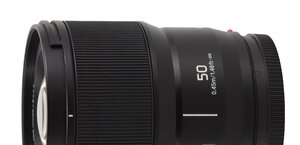Nikon Nikkor AF-S DX 16-80 mm f/2.8-4E ED VR
8. Vignetting
| Nikon D7000, 16 mm, f/2.8 | Nikon D7000, 16 mm, f/4.0 |

|

|
| Nikon D7000, 30 mm, f/3.2 | Nikon D7000, 30 mm, f/4.0 |

|

|
| Nikon D7000, 50 mm, f/3.5 | Nikon D7000, 50 mm, f/5.6 |

|

|
| Nikon D7000, 80 mm, f/4.0 | Nikon D7000, 80 mm, f/5.6 |

|

|
At the most difficult combination of 16 mm and f/2.8 aperture the losses of light in the frame corners amount to 40% (−1.50 EV). Although it is a high value the Nikkor still compares favourably with its rivals. At the relative aperture amounting to f/3.5 so being slower the Sony-Zeiss 16-80 mm lost as much as 42% of light. The Sigma C 17–70 mm at 17 mm and by f/2.8 reached a better result, that of 33%, but after all that 1 mm less in the focal range changes the scale of the problem noticeably.
Please Support UsIf you enjoy our reviews and articles, and you want us to continue our work please, support our website by donating through PayPal. The funds are going to be used for paying our editorial team, renting servers, and equipping our testing studio; only that way we will be able to continue providing you interesting content for free. |
- - - - - - - - - - - - - - - - - - - - - - - - - - - - - - - - - - - - - - - - - - - - - - - -
On stopping down the aperture to f/4.0 you see the vignetting level of the Nikkor decrease to 26% (−0.88 EV), and on employing the f/5.6 aperture that aberration reaches 17% (−0.54 EV). Further stopping down barely influences the results because by f/8.0 we got a value of 16% (−0.51 EV).
A noticeably better situation is observed at the 30 mm focal length. Here, even with the lens wide open, the vignetting reaches a moderate level of 26% (−0.88 EV), and by f/4.0 it amounts to 17% (−0.55 EV). By f/5.6 practically all the problems disappear because the result we got was just 10% (−0.31 EV).
At 50 mm the vignetting increases again. By f/3.5 it amounts to 34% (−1.20 EV), by f/4.0 it reaches 29% (−0.99 EV), and by f/5.6 it gets to 15% (−0.46 EV). Almost complete disappearance of that aberration can be observed only by f/8.0, where we assessed its level as 8% (−0.24 EV).
Another increase, this time only slight, can be observed at 80 mm where, at the maximum relative aperture, the vignetting reaches 36% (−1.29 EV). By f/5.6 it decreases to 18% (−0.58 EV), and by f/8.0 it becomes imperceptible (8% and −0.23 EV).
 |
 |
 |
 |






